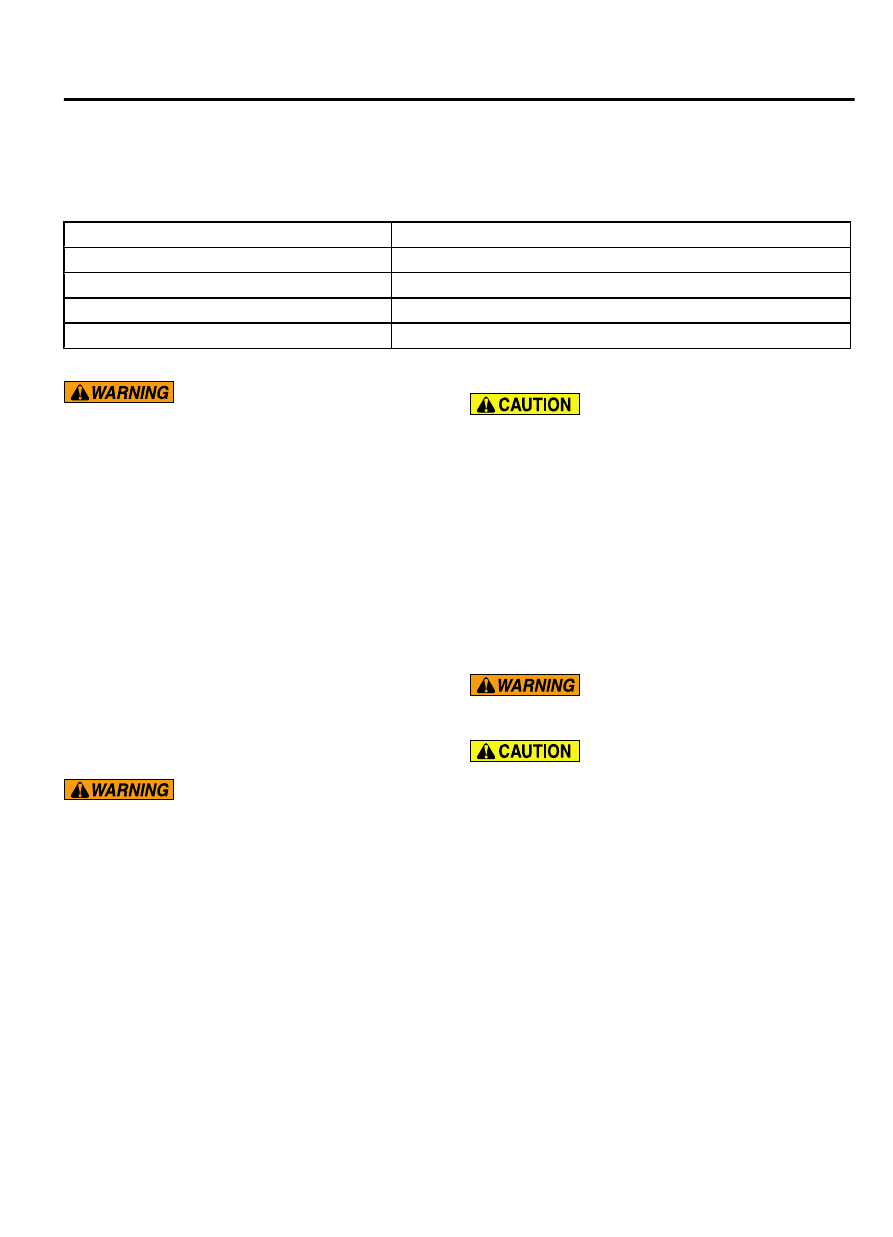Content .. 1176 1177 1178 1179 ..
Mitsubishi Outlander XL. Manual - part 1178

GENERAL DESCRIPTION
M15502000001USA0000010000
The blower, heater, and evaporator have been
integrated with the heater and A/C system to achieve
greater fan power and noise reduction.
Item
Specification
Heater control assembly
Dial type
Compressor
MSC90CAS
Compressor model
Scroll type
Refrigerant and quantity g (oz)
R-134a (HFC-134a), 480 - 520 (16.9 - 18.3)
SAFETY PRECAUTIONS
Wear safety goggles and gloves when servicing
the refrigeration system to prevent severe
damage to eyes and hands.
Because R-134a refrigerant is a hydro fluorocarbon
(HFC) which contains hydrogen atoms in place of
chlorine atoms, it will not cause damage to the ozone
layer.
Ozone filters out harmful radiation from the sun. To
assist in protecting the ozone layer, Mitsubishi Motors
Corporation recommends an R-134a refrigerant
recycling device.
Refrigerant R-134a is transparent and colorless in
both the liquid and vapor state. Since it has a boiling
point of -29.8°C (-21.64°F) at atmospheric pressure,
it will be a vapor at all normal temperatures and
pressures. The vapor is heavier than air, non-
flammable, and non-explosive. The following
precautions must be observed when handling
R-134a.
Do not heat R-134a above 40°C (104.0°F) or it may
catch fire and explode.
R-134a evaporates so rapidly at normal atmospheric
pressures and temperatures that it tends to freeze
anything it contacts. For this reason, extreme care
must be taken to prevent any liquid refrigerant from
contacting the skin and especially the eyes. Always
wear safety goggles when servicing the refrigeration
part of the A/C system. Keep a bottle of sterile mineral
oil handy when working on the refrigeration system.
1.
Should any liquid refrigerant get into your eyes, use
a few drops of mineral oil to wash them out. R-134a
is rapidly absorbed by the oil.
2.
Next, splash your eyes with plenty of cold water.
3.
Call your doctor immediately even if irritation has
ceased.
Keep R-134a containers upright when charging
the system.
In most instances, moderate heat is required to bring
the pressure of the refrigerant in its container above
the pressure of the system when charging or adding
refrigerant.
A bucket or large pan of hot water not over 40°C
(104.0°F) is all the heat required for this purpose. Do
not heat the refrigerant container with a blow torch or
any other means that would raise temperature and
pressure above this temperature. Do not weld or
steam-clean on or near the system components or
refrigerant lines.
The leak detector for R-134a should be used to
check for refrigerant gas leaks.
Do not allow liquid refrigerant to touch bright
metal or it will be stained.
When metering R-134a into the refrigeration system,
keep the supply tank or cans in an upright position. If
the refrigerant container is on its side or upside down,
liquid refrigerant will enter the system and damage the
compressor.
Refrigerant will tarnish bright metal and chrome
surfaces, and in combination with moisture can
severely corrode all metal surfaces.
AIR CONDITIONING
55A-3
GENERAL DESCRIPTION